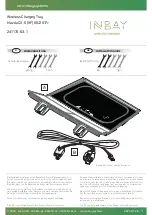
The radiator normally remains completely full, so there is
no longer a need to remove the coolant pressure cap
except for checking coolant freeze point or replacement
with new antifreeze coolant.
WARNING!
Never add coolant to the radiator when the engine is
overheated. Do not loosen or remove pressure cap to
cool an overheated engine! The coolant is under
pressure and severe scalding could result.
Drain, Flush And Refill
At intervals shown on the Maintenance Schedules, the
system should be drained, flushed and refilled. Refer to
your dealer or consult a service manual for proper
procedures.
Adding Coolant
When adding coolant, or refilling the system, a minimum
solution of 50% recommended HOAT ethylene glycol
engine coolant (antifreeze) and distilled water should be
used. Use higher concentrations (not to exceed 70%) if
temperatures below
⫺
34°F (
⫺
37°C) are anticipated.
Use only high purity water such as distilled or deionized
water when mixing the water/engine coolant solution.
The use of lower quality water will reduce the amount of
corrosion protection in the engine cooling system.
NOTE:
It is the owner’s responsibility to maintain the
proper level of protection against freezing according to
the temperatures occurring in the area where the vehicle
is operated.
NOTE:
Mixing coolant types will decrease the life of the
engine coolant and will require more frequent coolant
changes.
386
MAINTAINING YOUR VEHICLE
Summary of Contents for Ram Power Wagon
Page 2: ......
Page 8: ......
Page 40: ...Inserting Latch Plate In Use Position 40 THINGS TO KNOW BEFORE STARTING YOUR VEHICLE...
Page 68: ...Quad Cab Tether Strap Mounting 68 THINGS TO KNOW BEFORE STARTING YOUR VEHICLE...
Page 74: ......
Page 89: ...Blindspot Mirror Trailer Towing Position UNDERSTANDING THE FEATURES OF YOUR VEHICLE 89 3...
Page 110: ...110 UNDERSTANDING THE FEATURES OF YOUR VEHICLE...
Page 111: ...UNDERSTANDING THE FEATURES OF YOUR VEHICLE 111 3...
Page 112: ...112 UNDERSTANDING THE FEATURES OF YOUR VEHICLE...
Page 166: ...INSTRUMENTS AND CONTROLS 166 UNDERSTANDING YOUR INSTRUMENT PANEL...
Page 167: ...INSTRUMENT CLUSTER UNDERSTANDING YOUR INSTRUMENT PANEL 167 4...
Page 226: ...Operating Tips Chart 226 UNDERSTANDING YOUR INSTRUMENT PANEL...
Page 237: ...Angles A B C and D STARTING AND OPERATING 237 5...
Page 258: ...UNDERSTANDING THE FEATURES OF YOUR WINCH Winch Components 258 STARTING AND OPERATING...
Page 304: ...304 STARTING AND OPERATING...
Page 362: ......
Page 366: ...ENGINE COMPARTMENT 5 7L 366 MAINTAINING YOUR VEHICLE...
Page 420: ......
Page 450: ......
Page 451: ...INDEX 10...
















































